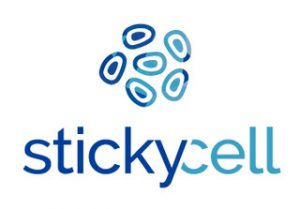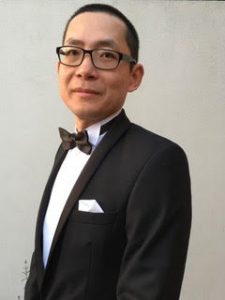 |
 |
If we can fight inflammation, we can fight SARS-CoV-2 and new pathogens
Sticky white blood cells are good!
To fight the viral infection, strategies at three stages can be developed:
- Prevention;
- Diagnosis; and
- Treatments
Once a new coronavirus is identified and characterised, a vaccine can then be developed to reduce disease spreading with its mass-production requiring up to 12 months. Given the well-established genomic technique, PCR-based approaches have been can quickly developed for fast diagnosis.
Historically, the treatments for viral infection is very limited in chemistry. Small molecules may be used to stop viral replication. Antibodies may also be developed to facilitate virus elimination. However, it takes time to develop these types of new drugs for the new coronavirus.
After the virus infects a human, the immune system will quickly respond and be activated to induce inflammation. As a result, circulating white blood cells (part of our immune system, also known as leukocytes) can detect the “danger” signals and start to transmigrate from the circulation into the site of inflammation (e.g. lung, skin or heart). Although this is a fundamental process our body uses to protect us from viral infection, the uncontrolled excessive inflammation may cause more devastating consequences than the virus itself.
Take pneumonia for example, which is an inflammation in the lung, it was identified in most confirmed coronavirus patients, and severe tissue damages were positively associated with disease activities1. For inflammation to occur, circulating leukocytes must leave the vasculature to reach affected tissues. Therefore, if the leukocyte ability to transmigrate into the tissue and cause inflammation can be quantitatively measured, it will substantially assist the clinicians to develop optimal treatments to avoid unwanted inflammation in these patients.
A new blood test platform, we named Leukocyte Adhesive Function Assay (LAFA), was recently developed. LAFA utilises advanced bioengineering technology to mimic blood microcirculation in vitro, allowing accurate assessment of leukocyte activation and their ability to cause inflammation. LAFA has being validated in various clinical settings through multiple clinical studies, including infectious diseases.
As such, it is proposed that LAFA may be used as a companion diagnostic tool in the following areas to assist clinicians to treat coronavirus affected patients:
- Detect early signs of systemic immune response in coronavirus infected patients.
Systemic immune response may happen at any time in infected patients. The LAFA test can be used to detect early signs of systemic immune response, thereby provide the opportunity for early intervention and improving survival rates. LAFA is able to determine how specific leukocyte subsets may be activated at the molecular level, offering insight into the immune system.
- To assess the effects of coronavirus on leukocyte functions in asymptomatic patients.
Some confirmed coronavirus infected patients show no symptoms, particularly during the incubation period. Having no symptoms does not necessarily mean the immune system is not responding to the infection. As such, the ability of LAFA to detect how a patient’s immune system responds to the infection can provide information on the disease pathogenesis which assists clinicians choose appropriate treatment options.
- To determine therapeutic effects of certain treatments on coronavirus infected patients.
The therapeutic effects of many drugs for viral infection can only be determined by a trial-and-error approach. By performing LAFA tests before and after certain treatments, however, LAFA is able to directly assess the drug effects on a patient’s immune system in real time, providing a more sensitive and accurate approach to assessing drug therapeutic effectiveness. This means we can project the likelihood of how a patient will respond to the drug treatment.
LAFA may be very useful to assist clinicians, researchers and eventually consumers to understand the pathogenesis of coronavirus infection as well as monitor the disease activity in individual patients. As a result, optimal therapies may be developed. Although more scientific research may be required, the LAFA technique will provide a brand-new tool to assist us to eventually conquer the diseases caused by coronavirus or other similar viruses.
References
- Huang, C., et al. Clinical features of patients infected with 2019 novel coronavirus in Wuhan, China. Lancet (2020).
Sticky Cell Pty Ltd
w | stickycell.com.au
ABN: 28 614 319 292
PO Box 5269, Kenmore East Q 4069 Australia
p | +61 412 462 320
e | enquiry@stickycell.com.au
 |
 |
Interview with Dr Colin Cheng and Ms Debbie Sommerville
The Sticky Cell and Bionic Air Story:
- How do we protect ourselves from potentially harmful pathogens?
- How well do those protective mechanisms actually work at the individual human level?
- How are human diseases developed and progressed?
- Is it possible to measure & monitor these processes?
- Is it possible to combine chemistry and physics to treat and prevent these diseases?
The immune system is the means by which our body recognises & defends against foreign and harmful agents such as bacteria, viruses and other substances with the potential to do harm.
For example, the autoimmune disease called multiple sclerosis. The immune system recognises, in error, our healthy cells as being harmful, however, these cells are not foreign, and yet it initiates a defensive response against them. In short, the immune system attacks the healthy cells, often with catastrophic consequences.
Dr Colin Cheng, an immunologist & founder of Sticky Cell, has studied the human immune system for almost 20 years. “I wanted to contribute to our understanding of the immune system. When I started my research, the immune system was not well understood.”
Over those 20 years, Dr Cheng and his team has made important contributions to the scientific body of knowledge, focused on how the immune system works.
“We have found that the motility & stickiness of white blood cells is a significant indicator of the functional state of the immune system.”
Dr Cheng’s research progressed to the investigation of the clinical relevance & application of white blood cell motility & stickiness. A major breakthrough was the development of an analytical test, the Leukocyte Adhesive Function Assay or LAFA, a technology that enables the monitoring & measurement of white blood cell motility & stickiness. The LAFA technology from StickyCell is positioned to make significant improvements & advancements in disease management.
“Having developed the LAFA test we investigated the clinical applications of the technology. LAFA has proven helpful in understanding how many human diseases are developed and progressed, including autoimmune diseases (e.g. arthritis, multiple sclerosis, scleroderma etc) and infectious disease (e.g COVID-19, Q fever etc).”
At this very point, Dr Colin Cheng was introduced to Ms Debbie Sommerville, President and protégé of Australian inventor Mr Joshua Shaw who went on to further develop his life’s work of the Elanra medical devices, under Bionic Air. It has been suspected for a long time that ionised air produced by Bionic Air’s therapeutic air ionisers may have significant therapeutic impacts on our immune system to improve our immunity. However, due to the lack of sophisticated tools, the exact mechanisms underlining how the ionised air may regulated our immune system are still emerging. “The mysteries of the ionised air are being found with the addition of Plasma Medicine Sciences in ‘Cold Air Plasma’ and developments in Quantum physics. Measuring is still a challenge but patient results are impressive and we have an opportunity to combine our to achieve more effective treatments for our patients.” Ms Debbie Sommerville said.
Consequently, Bionic Air is now delighted to announce a partnership with Sticky Cell. “I am absolutely pleased to have the opportunity to build a collaborative partnership with Ms Sommerville and her team at Bionic Air. I believe Sticky Cell’s technology is well positioned to answer a series of critical scientific questions on how her technology exerts its therapeutic effects in a human, which we were not able to answer previously.” Dr Colin Cheng said.
Ms Debbie Sommerville was also very excited about this partnership. “It is our honour to work with Dr Cheng to address these very important scientific and clinical issues, with a focus on inflammation and the immune system. Given our results to date on compassionate grounds with SARS-CoV-2 since 1-2020, and long haul virus conditions and symptoms since the early 1970’s, we have a significant database and history with more than 1 Million patients experiencing this technology since 1967.”
Dr Cheng and Ms Sommerville is clear about the future direction of the Sticky Cell and Bionic Air partnership:
“We must continue our important work. It is absolutely essential we continue our research, building on the scientific and clinical knowledge of her technology and its impacts on the immune system. She has a significant amount of success in patients over a very long time, and with her recent improvements has extended that to better human outcomes across many health conditions as it’s a systemic treatment and hence why the immune function research is so critical. But the ability to measure and complete the required foundational science back then, was not known. Today Sticky Cell has advanced knowledge and capabilities in this area which can assist consumers fast and develop further applications into the future. Whilst at the same time developing the Sticky Cell technology for servicing innovative diagnostics and foresight on patient blood for physicians and researchers across the world.”
“Additionally, we are working on the commercialisation strategies for our partnership. As our research builds and with her extensive experience with application in consumers, we see more and more potential commercial opportunities in our pipeline.”
At this stage both Sticky Cell and Bionic Air look to identify right partners to assist with this critical journey. Such a journey requires a variety of expert & specialised knowledge and extensive resources. Ms Sommerville and Dr Cheng is currently working on the solidification of a number of partnerships, investigating others and interested to hear from other people, researchers, companies, investors & organisations who share the Sticky Cell Bionic Air visions.
Ms Debbie Sommerville and Dr Colin Cheng can be contacted by email: colin@stickycell.com.au and debbie@bionicair.com.au.
